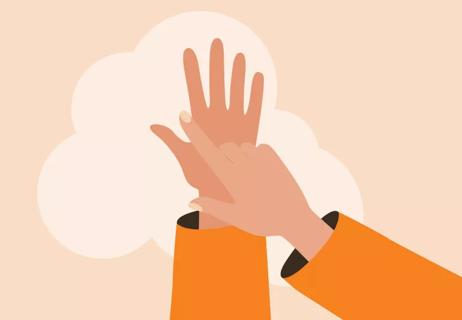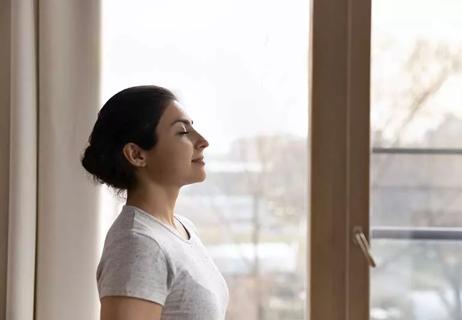Enter relaxation mode by taking deep breaths, releasing muscle tension and staying mindful

Life can be stressful. Most of us are constantly on the go, thinking about chores, school, work assignments and everything in between. But there’s a good chance that relaxation isn’t penciled in on your planner.
Advertisement
Cleveland Clinic is a non-profit academic medical center. Advertising on our site helps support our mission. We do not endorse non-Cleveland Clinic products or services. Policy
“What I hear from people the most is that it's hard to turn off their minds. They're constantly going, which prevents them from relaxing,” says psychologist Susan Albers, PsyD. “But we need to think of relaxing not as a stopping point, but as a necessary pause.”
Even if you know relaxation is beneficial, too much time on life’s hamster wheel may have you wondering where to start. Dr. Albers adds that relaxation has long been treated as a luxury — not a necessity.
“Not many people will say, ‘Let's schedule some relaxation time into the day.’ And most of us were never taught the skill of relaxing as kids.”
So taking the time now to build a relaxation toolkit for yourself is so important.
Dr. Albers shares her blueprint for mastering the art of relaxation.
While relaxation means different things to different people, Dr. Albers suggests five ways to tackle stress in the moment:
First, take note of your breathing. If you’re stressed, chances are you’re either breathing too quickly or not taking enough deep breaths. Controlling your breath out is a great way to calm down your nervous system and lower your heart rate. “It moves your body into relaxation mode,” explains Dr. Albers.
She suggests a technique called the squeegee breath:
Advertisement
Listening to music that features a wind instrument, such as a flute or trumpet, can also be calming. They can help improve breathing patterns because you have to control your breathing while making notes.
Other breathwork exercises you can use also include:
Once you get breathing exercises in your toolkit, you’ll feel more prepared to handle any stress that hits you.
Pause and take a moment right now to relax your shoulders. Unclench your jaw. Feels a little better, right? Many of us don’t realize how much we hold onto stress in our bodies. Changing physical sensations during moments of stress can help quiet anxious thoughts.
“Anything soothing to the body can help. It can be as simple as cocooning in a warm blanket or doing some mindful movements or exercises,” points out Dr. Albers.
Movements that release muscle tension are key. “One that I recommend is called the ragdoll. Let your shoulders drop down like a ragdoll. People are often surprised at how much tension they're carrying when they do that.”
There’s even a technique called progressive muscle relaxation where you slowly recognize and relax any tension throughout your body.
[H3]: 3. Get moving We’re not talking about running a marathon or even lifting weights — although, to each their own! But when it comes to relaxation, any type of exercise will lower your stress hormones and heighten your endorphin production — which can in turn, make you feel more relaxed.
If you’re not sure where to start, yoga is a good, easy movement technique to work into your everyday routine. Here are a few yoga practices you can try for relaxation:
Oftentimes, our stress and anxiety get us in a state of worrying about the “what ifs” in life. This is why mindfulness is a great way to fight back against stress: it pulls you back to the present.
One of the main ways to practice mindfulness is meditation. While sitting still and closing your eyes may be the last thing you want to do in a stressed-out state, even a couple minutes can help. The act of simply giving yourself a couple moments of silence can help greatly when it comes to relieving your stress.You can also practice mindfulness by journaling your thoughts. It may not seem like much, but jotting down what you’re feeling during a moment of stress can be powerful.
Advertisement
Dr. Albers also points out that part of this is about a mindset shift as well. “When you look too far ahead, you can become anxious. To relax, try to enjoy and take in each moment instead of worrying about what’s happening next,” she suggests.
You can soothe your anxiety by taking a step outside. Going on a walk or getting a breath of fresh air can help you get out of your head and back into your body.
For example, forest therapy is simply getting outside into green space. A 2011 study showed it reduces blood pressure and boosts mood. “Even if you can't get outside, sitting next to a window can help you unwind and relax,” says Dr. Albers.
For some of us, blending relaxation into our everyday lives can be a tough transition. “Our culture focuses on the go-go-go. It stresses that you should constantly be doing something,” says Dr. Albers. “As a result, downtime can feel foreign or uncomfortable.”
Reminding yourself that relaxation techniques are an important part of a healthy lifestyle can help you to prioritize them..
Here are some things to remember when working relaxation into your life:
Advertisement
Relaxation takes time and a commitment to the moment. “I recommend people set their phone timer for at least 20 minutes so that you don’t worry about the time,” Dr. Albers says. “Relaxation is more of a feeling than a thought. The measure of relaxation is how you feel in your body, not when you think you have to get back to more pressing concerns.”
As you relax more, you may find yourself snapping at your loved ones less. But benefits go beyond a more pleasant demeanor.
“When you stay in a heightened state of stress, it wears your body down, making it more vulnerable,” notes Dr. Albers. “You can often tell when somebody has been stressed over a long period of time. They look worn down. They can have more illnesses or colds. Relaxation leads to more strength and resilience.”
A body under constant stress is like an engine that’s continuously being revved. “Relaxation is like shifting into a lower gear and cruising for a while, letting your body regenerate and recover.”
Advertisement
Learn more about our editorial process.
Advertisement

This multisensory breathing technique can bring you peace, calm and even pain relief

5 easy steps to help with sleep, stress and more

Not just for children anymore

Identify your triggers, set ground rules for your break and start practicing mindfulness

A diabetes diagnosis, new or long-standing, can trigger reactions like grief, stress, depression and frustration, but symptom relief and help are available

Your body’s natural response to stress can lead to painful skin irritation

Too much screen time and unrealistic expectations and perceptions and can lead to an increased risk of anxiety and depression

Certain activities, foods and supplements can help calm your body

Type 2 diabetes isn’t inevitable with these dietary changes

Applying a hot or cold compress can help with pain